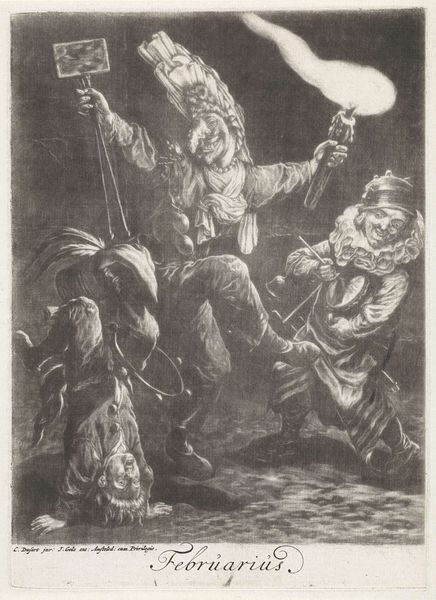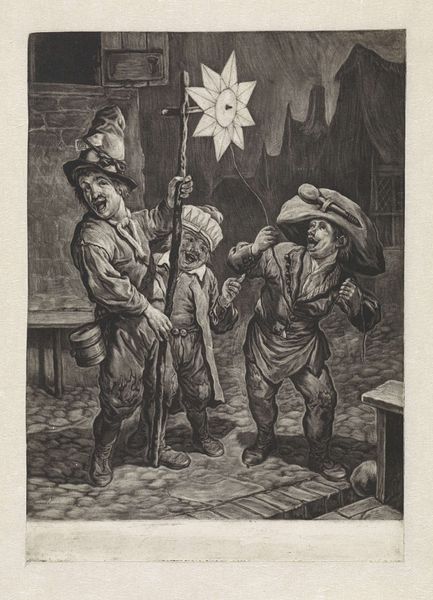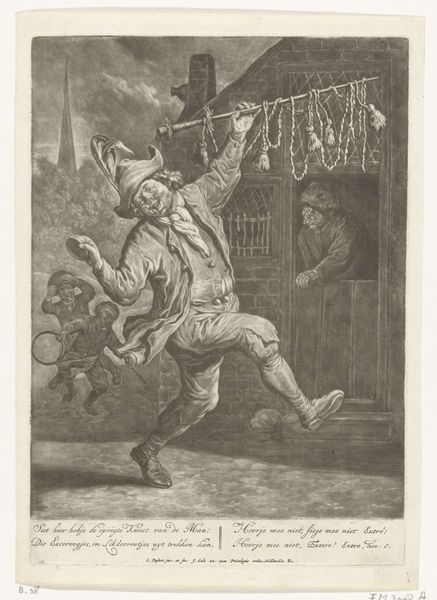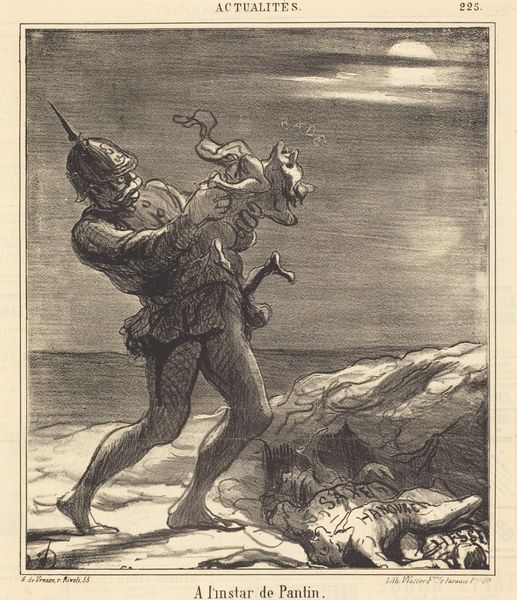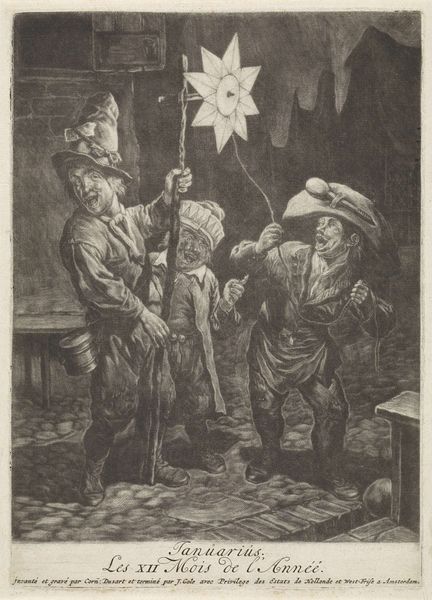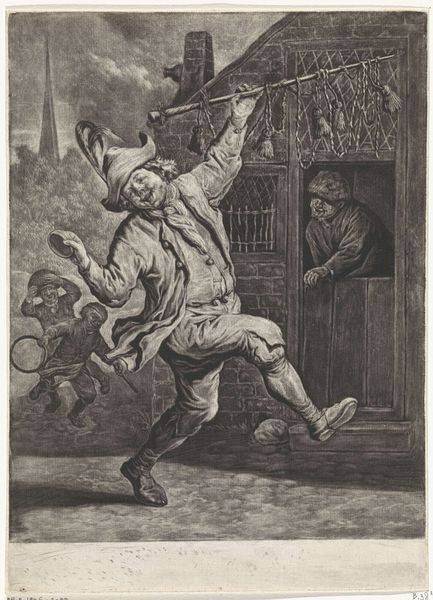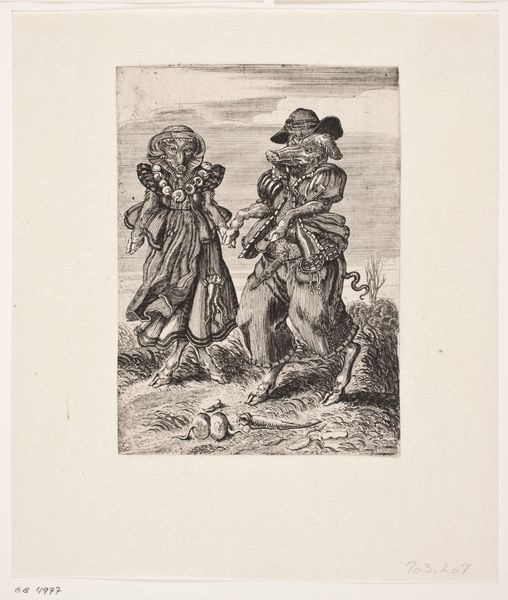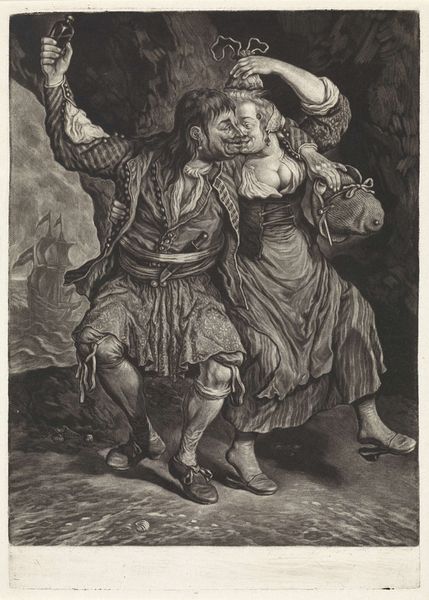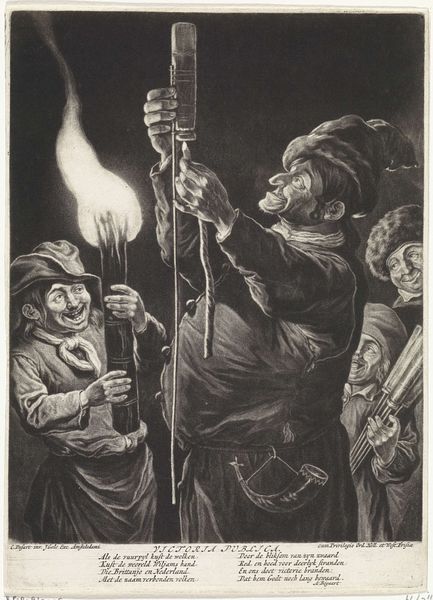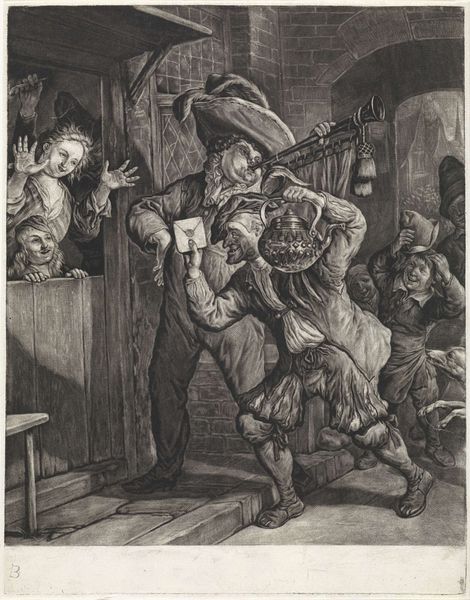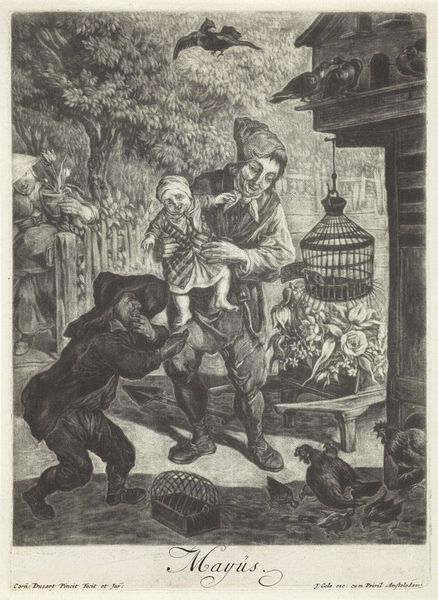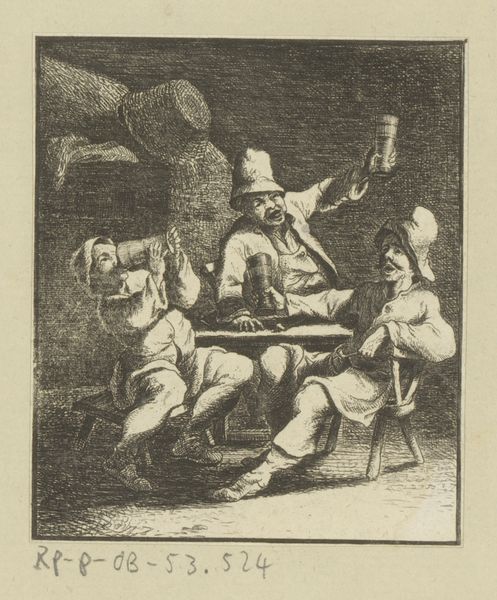
engraving
#
baroque
#
caricature
#
figuration
#
genre-painting
#
engraving
Dimensions: height 216 mm, width 154 mm
Copyright: Rijks Museum: Open Domain
Curator: Here we have Cornelis Dusart’s engraving, "Februari," which he produced between 1679 and 1704. You can currently find it on display here at the Rijksmuseum. What strikes you first about it? Editor: Utter chaos! There's an almost manic energy conveyed through the scene. The contorted figures and the rough handling of the medium give it this feel. It doesn't come across as precise craftsmanship, more a quick and furious rendering. Curator: The hurried feel suits its Baroque style perfectly. Look at the central figure: the fool with his motley dress, lit torch, and an extravagant hat. His grin and stance seem to embody a revelry. It brings to mind archetypes of midwinter madness— a chaotic inversion of social norms. Editor: I'm drawn to the texture itself. The varying depth of the engraved lines makes some parts feel heavier, darker. You can really see where Dusart pressed hard on the plate, leaving a mark. It also affects the depth of field, so the back looks fuzzy. Was this on purpose, or maybe he didn't care? I imagine the printing process might have required assistants too; what kind of labor was involved here? Curator: The caricature, and how its symbolism reflects folk traditions, is captivating. The central figure dominates—note the eggs hanging from his costume; clear symbols of fertility, hinting at the shift from winter towards the renewal of spring. The figure hanging upside down may also be meant to look comical but can also have a broader spiritual association to the inverted images of the crucifixion and other important spiritual symbols, not to mention a reference to Tarot. Editor: True, we need to recall who the audiences were too. Broad distribution prints weren't expensive. So were they consumed mostly for humor, and only sometimes with an eye to social critique or as a devotional object? Also the location would tell us about its role: public house, domestic space, merchant home. It all influences meaning. Curator: Yes, "Februari," while playful on the surface, delves into deeper themes of cultural memory. This month as a threshold is visually conveyed using established symbology and customs. It brings into sharp focus the cultural mindset surrounding seasonal change, as expressed in both sanctioned and perhaps not so sanctioned forms. Editor: Indeed. And Dusart’s chosen method - printmaking, was vital to expressing this vision as widely as possible and also giving it its slightly crude but energetic physical form. I will think differently about printing, given it often requires a lot of preparation, hard repetitive work to produce just one edition, a fact often left aside in considerations of prints and engravings.
Comments
No comments
Be the first to comment and join the conversation on the ultimate creative platform.
